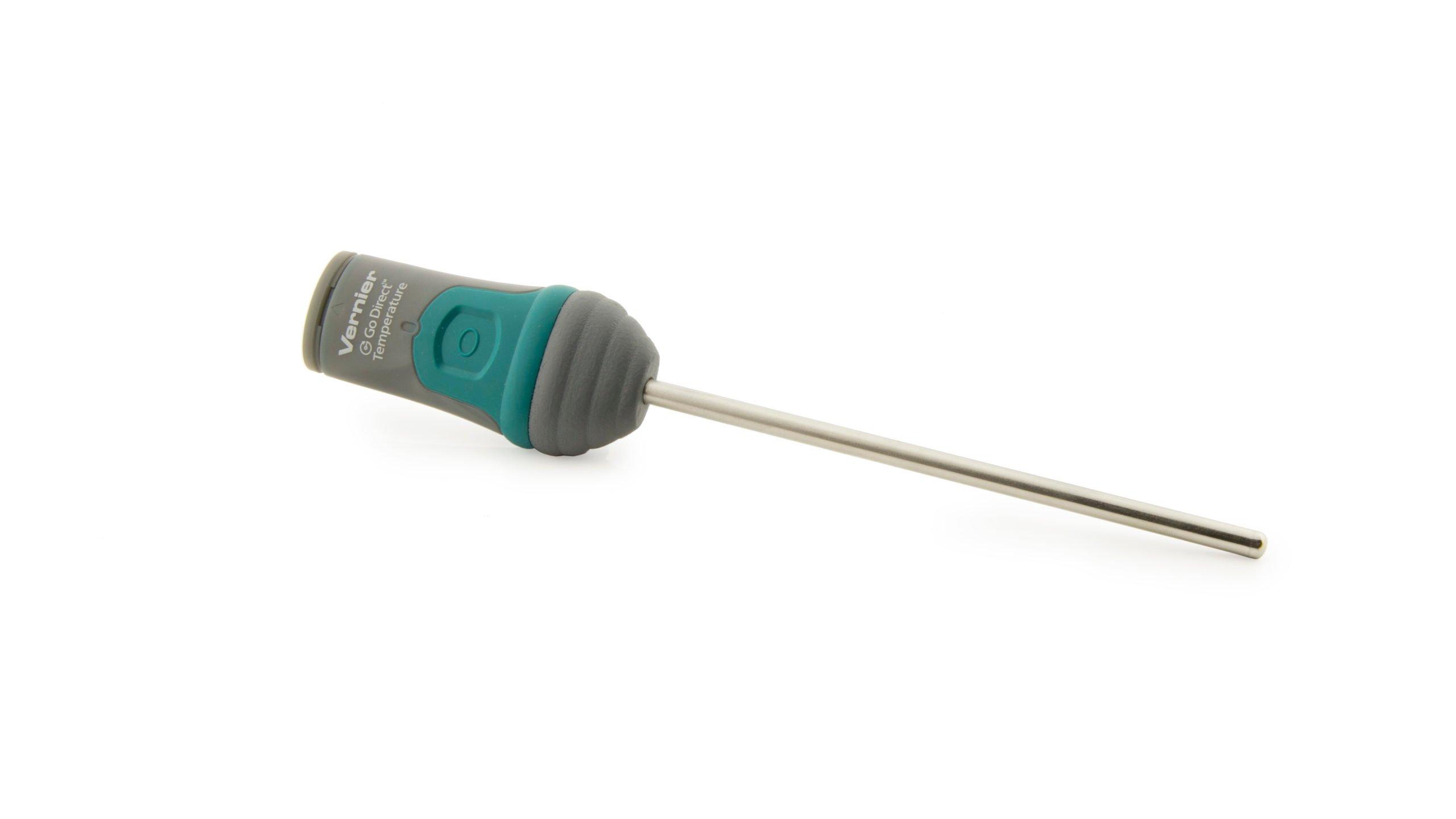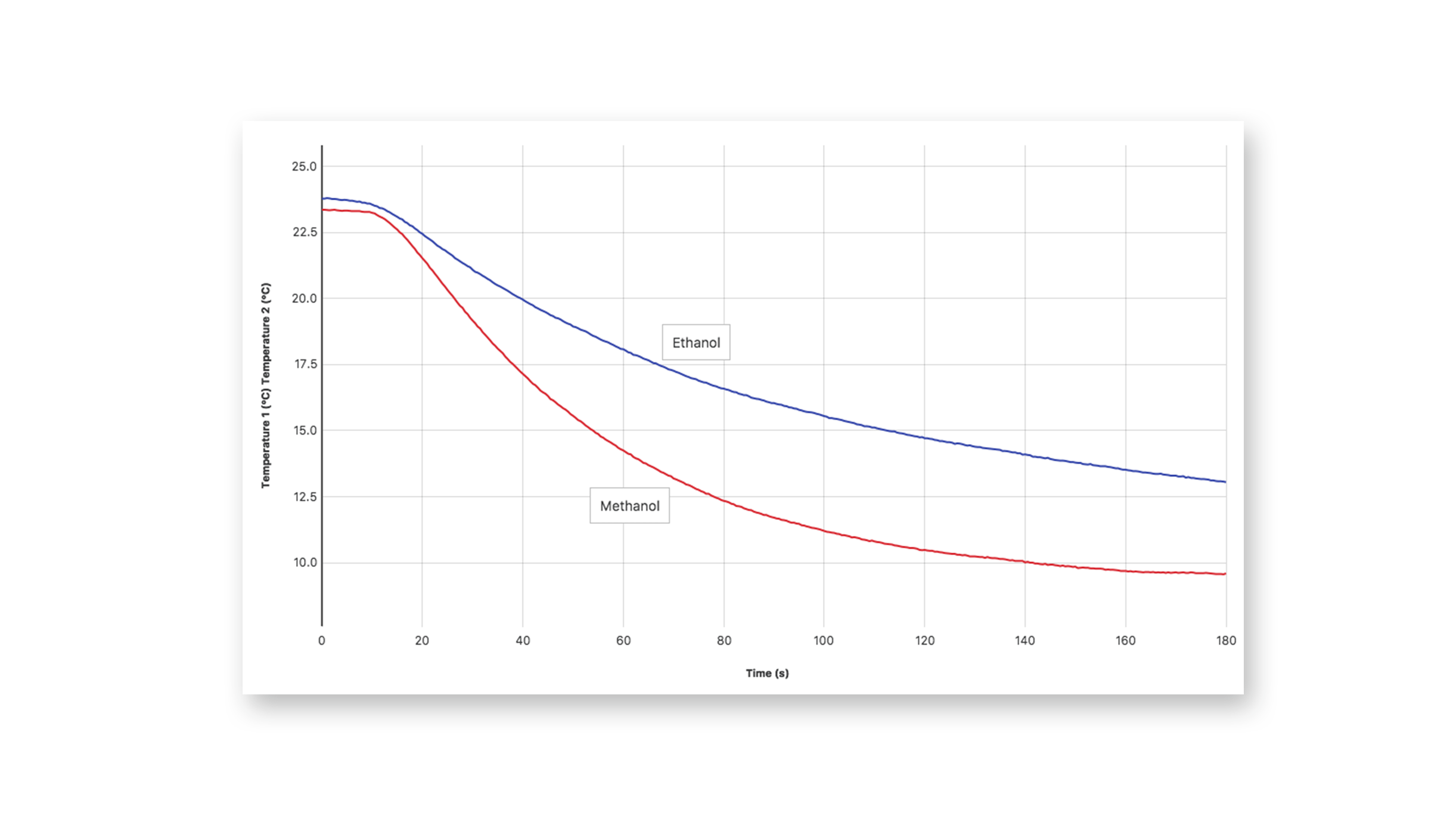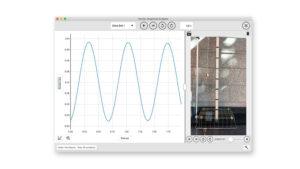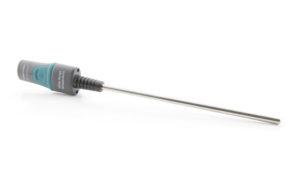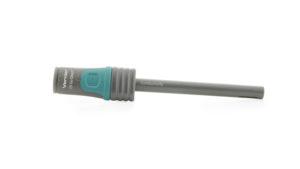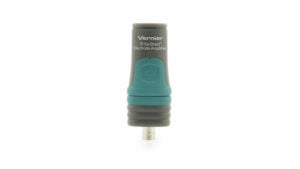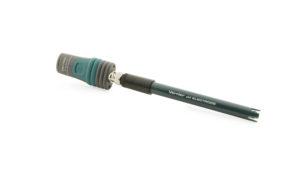Unlike a traditional thermometer, Go Direct Temperature allows students to collect real-time temperature measurements of a single instance or over a period of time. Its range and wireless capability make Go Direct Temperature the go-to sensor for real-world applications.
Use this sensor in a variety of experiments:
- Conduct endothermic and exothermic reactions.
- Investigate the freezing and melting of water.
- Measure the energy content of foods.
- Examine the absorption of radiant energy.
- Monitor environmental conditions.
Rechargeable Battery—Ready When You Are
The robust rechargeable battery offers long battery life and provides always-ready operation when using the sensor wirelessly. Monitor battery life directly from our award-winning Vernier Graphical Analysis® app, as well as LabQuest® 3. Should the battery run low, simply connect the sensor to the charging cable and keep on collecting—no interruptions or inconvenience to you or your students.
Wireless or Wired—The Flexibility to Choose
Our Go Direct sensors connect directly to your mobile device, Chromebook™, or computer using our Vernier Graphical Analysis® app—no additional equipment or software purchases are necessary. Go Direct sensors can be used wired via USB or wirelessly via Bluetooth® wireless technology, allowing you to choose the best solution for your classroom or laboratory.
Go Direct Temperature Teacher Pack
Purchase a Go Direct Temperature Teacher Pack to receive a discount on 8 Go Direct Temperature Probes and a Go Direct® Charge Station. The Go Direct Charge Station will charge up to 16 Go Direct sensors at a time.

